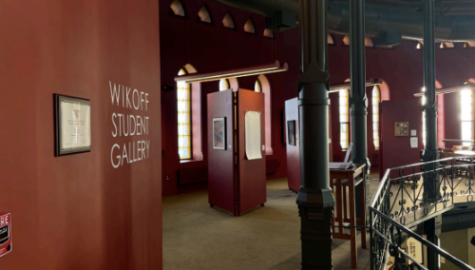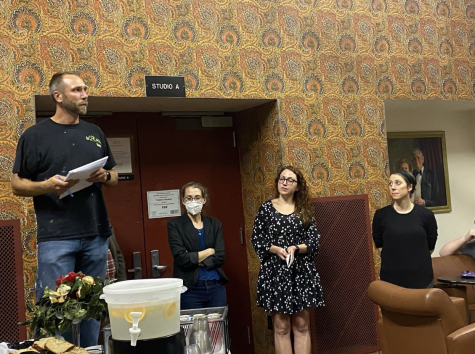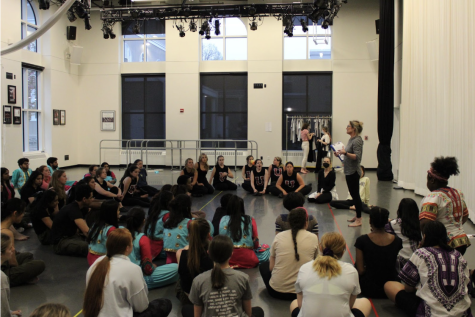Docent talks give context and analysis to identity-driven art
January 23, 2020
As part of the closing of the exhibit, which was on display for nearly five months, the Mandeville Gallery conducted their work study student-run docent talks on Thursday, January 16 for “Embody.”
Curated by Julie Lohnes, “Embody” explored contemporary diasporic artists who cultivated notions of identity through their multi-media works.
If you haven’t been to a docent talk in the past, one consists of each student describing the work they have chosen, explaining its themes at large and inserting their own analysis. Each student is both a guide and an interpreter, allowing for docent talk goers to consume art with background context.
The role of art guides can occasionally be controversial as a result of one’s own experience with the art being interrupted by the overseeing institution’s analysis. However, at the Mandeville Gallery, the docent talks enable students to interact with artwork in a professional and creative way.
“The way these figures are made can be seen as acts of opposition to stereotyping. They resist a narrow interpretation of the figures as constructs. Each image is built to give agency and range to the life of experience the subject has lived. By blurring the form through manipulation of medium, each artist creates an unfixed figure which cannot be metaphorically captured or stereotyped,” Lohnes commented he manifestations of identity in the various works.
Ryan Hayes ’23 discussed the work “The Sun, The Moon, and The Truth,” by Amir H. Fallah and began his talk by attacking its striking visual appearance, paying attention to its vibrancy and intricacy. Hayes described how Fallah creates his work through the fashion of portraiture; he takes a photograph of the person with personal belongings, messes with Photoshop for a bit and then begins painting the piece. Diving into the complications of the immigrant experience in America, Fallah is satirical in the Arabic script he chooses to write, according to Hayes.
Adenike Hickson said about the acrylic and oil piece, “Given the Ground (the fact that it amazes me does not mean I relinquish it) by Firelei Báez. Hickson provided background information on the Dominican- born artist and how “her art is used to articulate a complex rumination of her Caribbean background and serves as a defense against predetermined ethnic stereotypes in an attempt to unite communities around the world.”
When diving into specific aspects of the work, Hickson described the cosmic skin of the figure as “a liquid that is not homogenous … it shows that we are all multifaceted.”
Maymunah Ahmed focused on “Birmingham,” a triptych constructed by Toyin Ojih Odutola. The four-color lithograph with gold leaf on paper is a part of the Union College Permanent Collection.
Exploring her personal experiences as a young black girl in conservative America, the artist has a unique experience of coming from Nigeria directly to Southern conservative America. Ahmed explained how while the piece pictures a black man, the artist is exploring the questions of what skin color is and what it means to be black. Ahmed further navigated the themes of vulnerability and gender constructions in the work.
Other student docents included Kaitlynn Blow ’20, Shannon Collins ’20, and Samuel Perry ’23.











